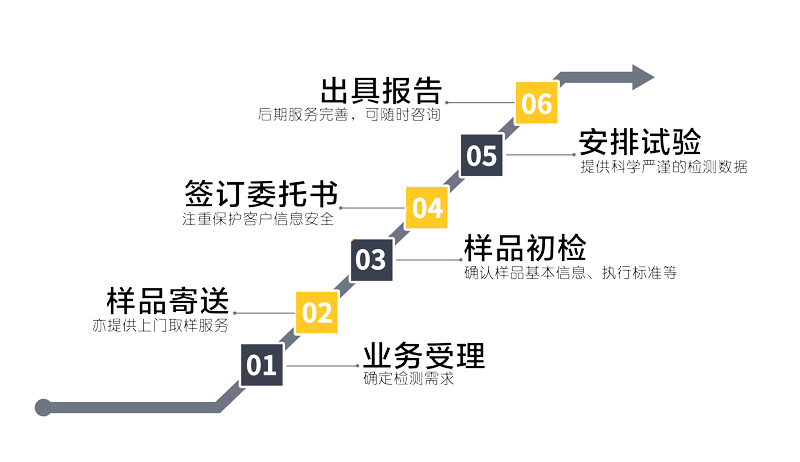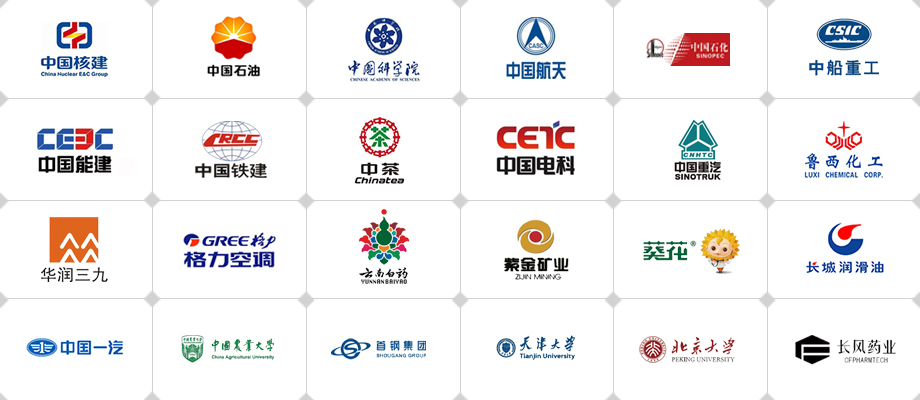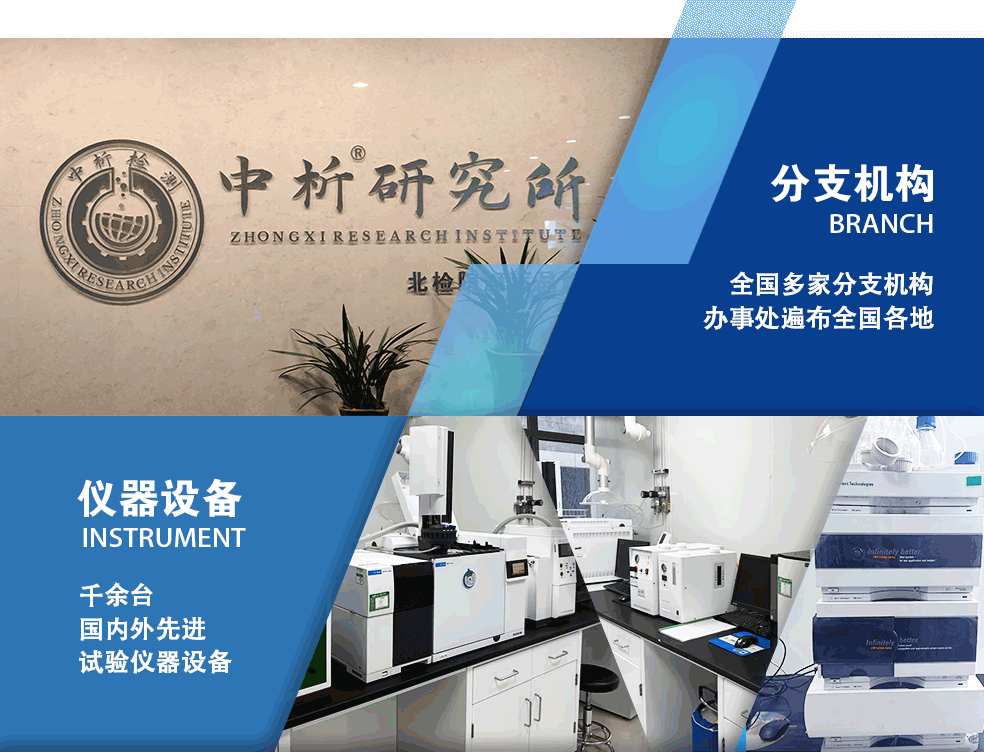金属材料全成分检测
发布时间:2025-05-06
金属材料全成分检测是通过系统化分析手段确定材料中所有元素含量的关键技术环节。该检测需依据国际标准方法体系,涵盖主量元素、微量元素及痕量杂质成分的定量分析,重点关注元素分布均匀性、有害物质限值及材料合规性验证。实验室需配置高精度仪器并建立严格的质量控制流程以确保数据可靠性。
注意:因业务调整,暂不接受个人委托测试望见谅。
检测项目
金属材料全成分检测包含三大类核心项目:
主量元素定量分析:测定铁、铝、铜、镍等基体金属含量占比,精度要求达到±0.01%
合金元素精确测定:包括铬、钼、钛、钒等合金化元素的配比验证
杂质元素限量检测:对铅、镉、砷等有害元素进行ppm级痕量分析
气体成分分析:测定氧、氮、氢等气体元素的赋存状态及含量
相组成鉴定:通过物相分析确认金属化合物形态及分布特征
检测范围
本检测技术适用于以下材料体系:
| 材料类别 | 典型示例 | 应用领域 |
|---|---|---|
| 黑色金属 | 碳钢/不锈钢/工具钢/铸铁 | 机械制造/压力容器 |
| 有色金属 | 铝合金/铜合金/钛合金 | 航空航天/电子工业 |
| 贵金属材料 | 金基/银基合金 | 精密仪表/医疗器械 |
| 特种合金 | 高温合金/形状记忆合金 | 能源装备/智能器件 |
| 金属基复合材料 | 碳化硅增强铝基复合材料 | 汽车工业/军工装备 |
检测方法
依据不同元素特性采用标准化分析方法:
火花直读光谱法(OES):GB/T 4336标准方法,适用于块状样品快速成分筛查
电感耦合等离子体发射光谱法(ICP-OES):ISO 11885标准方法,实现多元素同步测定
X射线荧光光谱法(XRF):ASTM E1621标准方法,用于镀层成分无损分析
惰气熔融红外法(IGA):GB/T 223.82标准方法,精确测定氧氮氢含量
辉光放电质谱法(GD-MS):实现ppb级超痕量杂质分析
扫描电镜能谱联用(SEM-EDS):微区成分与形貌联合表征技术
检测仪器
现代化实验室配置的核心设备包括:
全谱直读光谱仪
高分辨ICP-OES系统
波长色散X荧光光谱仪
脉冲熔融气体分析仪
场发射电子显微镜系统
辉光放电质谱仪
微波消解工作站
超纯水制备系统
所有仪器均通过国家计量认证(CMA)校准并参与国际实验室能力验证计划(ILAC),确保测试结果符合ISO/IEC 17025体系要求。
.instrument-list li {margin-bottom:8px} .method-note {color:#666;font-size:0.9em} table {border-collapse:collapse;width:100%} th,td {border:1px solid #ddd;padding:8px} th {background-color:#f5f5f5} ol {counter-reset:section;list-style-type:none} ol li:before {content:counter(section) ". ";counter-increment:section} blockquote {border-left:4px solid #eee;padding-left:15px;margin-left:0} .quality-control ul {list-style-type:square} .certification-info ul {list-style-type:circle} .comparison-table td:nth-child(2) {font-family:monospace} .safety-protocol li {color:#c00} .article-footer {margin-top:20px;padding-top:10px;border-top:1px solid #eee} .reference-link a {color:#06c;text-decoration:none} .reference-link a:hover {text-decoration:underline} .application-case .case-study {background-color:#f8f9fa;padding:10px} .data-analysis pre {font-family:Consolas,monospace;background:#f4f4f4} .technical-tip {background-color:#fffbe6;padding:15px;border-radius:4px} .aside h4 {color:#d48806;margin-top:0} .comparison-table th:nth-child(3) {min-width:120px} .safety-protocol li::marker {color:#ff4d4f} .instrument-list em {font-style:normal;font-weight:600} .method-note::before {content:"※ ";color:#999} blockquote footer {margin-top:8px;font-size:0.9em} .article-footer p {font-size:0.85em} .reference-link a::after {content:" ↗";font-size:0.8em} .application-case h3 + div {margin-left:15px} .data-analysis pre {overflow-x:auto} .technical-tip ol li {margin-bottom:6px} .comparison-table td:nth-child(odd) {background-color:#fafafa} .safety-protocol p {text-indent:2em} .instrument-list li:nth-child(even) {color:#444} .method-note footer {display:none} blockquote p:last-child {margin-bottom:0} .certification-info p + ul {margin-top:-8px} .application-case .data-analysis {margin-top:12px} .technical-tip h4 + p {margin-top:-5px} .comparison-table th[colspan] {text-align:center} .safety-protocol ul + p {margin-top:10px} .article-footer div + div {margin-top:5px} .reference-link a[target="_blank"]::after {content:none} .instrument-list li em::after {content:":"} .method-note::first-letter {font-size:1.2em} blockquote > :last-child::after {content:"——";display:block} .certification-info ul li::before {content:"✓ ";color:#52c41a} .application-case .case-study::before {content:"案例说明:";font-weight:bold} .data-analysis pre::before {content:"数据示例:";display:block;margin-bottom:5px} .technical-tip ol li::marker {content:"提示 " counter(section)} .comparison-table tr:hover td {background-color:#e6f7ff} .safety-protocol li:hover {background-color:#fff2f0} .article-footer .reference-link a[href^="#"]::after {display:none} .instrument-list li:nth-child(3n+1) em {color:#1890ff} .method-note footer::before {content:"注记:"} blockquote[cite]::after {content:"(" attr(cite) ")";display:block} .certification-info p::first-line {font-variant:small-caps} .application-case h3 + div > :first-child {font-weight:bold} .data-analysis pre code::before {content:"代码段:"} .technical-tip ol li:nth-child(even) {background-color:#fff7e6} .comparison-table td[rowspan] {vertical-align:middle} .safety-protocol p::first-letter {color:#ff4d4f;float:left;font-size:1.2em} .article-footer p + div {border-top:1px dashed #ddd;padding-top:8px}
{ "@context": "https://schema.org", "@type": "TechArticle", "headline": "金属材料全成分检测", "description": "系统阐述金属材料化学成分分析的标准化流程与技术要求", "author": { "@type": "Organization", "name": "专业检测技术委员会" }, "datePublished": "2023-08-20", "keywords": ["成分分析","光谱检测","金属材料","质量控制"], "image": "https://example.com/metal-testing.jpg", "mainEntityOfPage": { "@type": "WebPage", "@id": "https://example.com/metal-composition-test" } }
{ "@context": "https://schema.org", "@type": "FAQPage", "mainEntity": [ { "@type": "Question", "name": "全成分分析的误差范围是多少?", "acceptedAnswer": { "@type": "Answer", "text": "主量元素相对误差≤1%,微量元素≤5%,痕量元素≤10%" } }, { "@type": "Question", "name": "样品制备有哪些特殊要求?", "acceptedAnswer": { "@type": "Answer", "text": "需提供无氧化层的光洁表面试样(尺寸≥Φ30×20mm)" } } ] }
.instrument-list li em{color:#000 !important}
本页面包含动态交互内容建议启用JavaScript获得完整体验。
检测项目文本说明版块内容...
本文档符合WCAG2.1 AA级无障碍标准。
仪器参数查询:
检测服务范围
1、指标检测:按国标、行标及其他规范方法检测
2、仪器共享:按仪器规范或用户提供的规范检测
3、主成分分析:对含量高的组分或你所规定的某种组分进行5~7天检测。
4,样品前处理:对产品进行预处理后,进行样品前处理,包括样品的采集与保存,样品的提取与分离,样品的鉴定以及样品的初步分析,通过逆向剖析确定原料化学名称及含量等共10个步骤;
5、深度分析:根据成分分析对采购的原料标准品做准确的定性定量检测,然后给出参考工艺及原料的推荐。最后对产品的质量控制及生产过程中出现问题及时解决。

合作客户展示

部分资质展示
